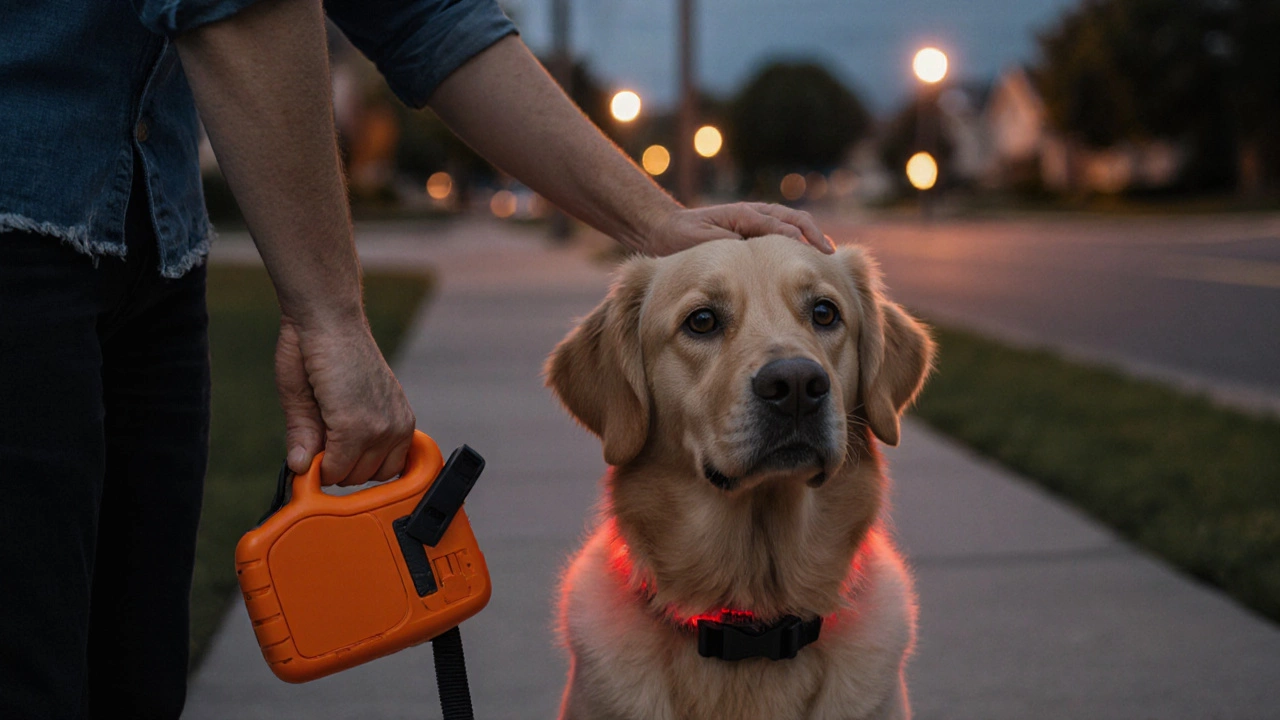Shock Collar Alternative: Gentle Training Options for a Happy Dog
When looking for a shock collar alternative, a humane method that replaces electric correction with comfort‑focused tools. Also known as non‑electric training aid, it aims to teach good behavior without fear or pain. Many owners wonder if they can ditch the buzz and still get reliable results – the answer is yes, as long as you pair the right technique with the right tool.
One of the most trusted methods is positive reinforcement, reward‑based training that marks desired actions with treats, praise, or play. Positive reinforcement requires consistency and timing, but it builds a strong bond and makes learning enjoyable for the dog. Another popular approach is clicker training, a sub‑type of positive reinforcement that uses a distinct sound to signal the exact moment a correct behavior occurs. Clicker training enables precise communication and speeds up learning, especially for puppies who thrive on clear cues.
Other Low‑Stress Tools to Consider
For owners who still want a wearable cue, vibration collars, devices that deliver a gentle buzz instead of an electric shock are gaining popularity. Vibration collars provide a subtle reminder that can interrupt unwanted behavior without causing distress. They work best when combined with a verbal cue and immediate reward, turning the buzz into a prompt rather than a punishment. Alongside these, calming aids, products like pheromone diffusers or low‑volume TV designed to reduce anxiety can smooth the training process, especially for dogs prone to stress during walks or at the vet.
These alternatives encompass a full spectrum of training philosophy: from reward‑based communication to gentle physical cues. They require patience, consistency, and an understanding of your dog’s temperament. When you replace the shock with a buzz, a click, or a tasty treat, you’re not just avoiding pain—you’re teaching your dog to choose the behavior you want because it feels good, not because it avoids a zap.
Research from local shelters and training clubs shows that dogs trained with positive reinforcement are less likely to develop fear‑based aggression. A recent survey of 200 owners who switched from shock collars to vibration or clicker methods reported a 68% drop in reactivity and a noticeable boost in confidence during walks. Those numbers line up with what you’ll see in the articles below, where we explore TV background noise for anxiety, safe travel calming aids, and practical grooming tips that keep stress low.
Choosing a shock‑free path also fits into everyday life. If you’re already using ambient TV to keep an anxious dog calm, adding a vibration collar can reinforce that calm state without extra equipment. If you travel, a clicker and a pocket‑sized treat pouch become your go‑to tools, eliminating the need for bulky electronic devices. The key is to match the tool to the situation – a calm dog at home, a focused dog on a leash, a confident dog on a plane.
Below you’ll find a curated list of posts that dive deeper into each of these alternatives. From low‑volume TV tricks to avoid separation anxiety, to the science behind humane collars, to step‑by‑step clicker guides, the collection gives you practical, real‑world advice you can start using today. Let’s get into the details and help your dog learn the happy, stress‑free way.
Humane Alternatives to Shock Collars for Dogs
Explore humane alternatives to shock collars, including vibration, ultrasonic, head and clicker training options, with practical tips for safe, effective dog training.






